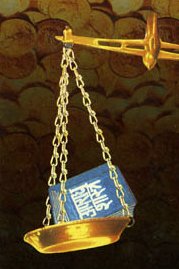Kulashila, Kūḷaśīḷa, Kūlaśīla, Kulaśīla, Kula-shila: 6 definitions
Introduction:
Kulashila means something in Hinduism, Sanskrit, Marathi. If you want to know the exact meaning, history, etymology or English translation of this term then check out the descriptions on this page. Add your comment or reference to a book if you want to contribute to this summary article.
The Sanskrit terms Kūḷaśīḷa and Kūlaśīla and Kulaśīla can be transliterated into English as Kulasila or Kuliashilia or Kulashila, using the IAST transliteration scheme (?).
In Hinduism
Purana and Itihasa (epic history)
Source: archive.org: Shiva Purana - English TranslationKulaśīla (कुलशील) refers to “traditional activity” which is preferred above wickedness (durvṛtta), according to the Śivapurāṇa 2.1.17. Accordingly, as Guṇanidhi, who was addicted to gambling (dyūta), was told by his mother as follows:—“[...] emulate your father [Yajñadatta] in form (rūpa), fame (yaśas) and traditional activity (kulaśīla). Why don’t you feel ashamed? Cast off your wickedness (durvṛtta). [...] Your father has never been a sinner (Pāpīyas). He strictly follows the path of the Vedas and Smṛtis [viz., śruti-smṛti-pathānuga]. Lord Śiva is my witness (sākṣin) for the purity of my mind (manas) that is riveted to his feet”.

The Purana (पुराण, purāṇas) refers to Sanskrit literature preserving ancient India’s vast cultural history, including historical legends, religious ceremonies, various arts and sciences. The eighteen mahapuranas total over 400,000 shlokas (metrical couplets) and date to at least several centuries BCE.
Arthashastra (politics and welfare)
Source: Brill: Śaivism and the Tantric Traditions (artha)Kulaśīla (कुलशील) refers to “(coming from a) very distinguished family”, according to the Arthaśāstra verse 1.9.9-10.—Accordingly, “He should appoint as chaplain a man who comes from a very distinguished family (kulaśīla) and has an equally distinguished character, who is thoroughly trained in the Veda together with the limbs, in divine omens, and in government, and who could counteract divine and human adversities through Atharvan means. He should follow him as a pupil his teacher, a son his father, and a servant his master”.

Arthashastra (अर्थशास्त्र, arthaśāstra) literature concerns itself with the teachings (shastra) of economic prosperity (artha) statecraft, politics and military tactics. The term arthashastra refers to both the name of these scientific teachings, as well as the name of a Sanskrit work included in such literature. This book was written (3rd century BCE) by by Kautilya, who flourished in the 4th century BCE.
Languages of India and abroad
Marathi-English dictionary
Source: DDSA: The Molesworth Marathi and English Dictionarykūḷaśīḷa (कूळशीळ).—f Family disposition, habits &c. A comprehensive term for the points which are usually considered in forming matrimonial matches. Hence kuḷāśiḷācā or kūḷaśīḷavān Of good family &c.
Source: DDSA: The Aryabhusan school dictionary, Marathi-Englishkūḷaśīḷa (कूळशीळ).—f Family disposition, habits, &c. A comprehensive term for the points which are usually considered in forming matrimonial matches. kūḷa- śīḷavāna or kuḷāśiḷācā of good family &c.
Marathi is an Indo-European language having over 70 million native speakers people in (predominantly) Maharashtra India. Marathi, like many other Indo-Aryan languages, evolved from early forms of Prakrit, which itself is a subset of Sanskrit, one of the most ancient languages of the world.
Sanskrit dictionary
Source: DDSA: The practical Sanskrit-English dictionaryKulaśīla (कुलशील).—character or conduct honourable to a family.
Derivable forms: kulaśīlam (कुलशीलम्).
Kulaśīla is a Sanskrit compound consisting of the terms kula and śīla (शील).
Source: Cologne Digital Sanskrit Dictionaries: Monier-Williams Sanskrit-English DictionaryKulaśīla (कुलशील):—[=kula-śīla] [from kula] n. character or conduct honourable to a family
Sanskrit, also spelled संस्कृतम् (saṃskṛtam), is an ancient language of India commonly seen as the grandmother of the Indo-European language family (even English!). Closely allied with Prakrit and Pali, Sanskrit is more exhaustive in both grammar and terms and has the most extensive collection of literature in the world, greatly surpassing its sister-languages Greek and Latin.
See also (Relevant definitions)
Partial matches: Shila, Cila, Kula.
Starts with: Kulashilasamanvita, Kulashilavant, Kulashilavat, Kulashilavayovrittavittavant.
Ends with: Ajnatakulashila.
Full-text: Kulashilasamanvita, Kulashilavat, Ajnatakulashila, Papiyas, Pathanuga, Pitribhakti, Durvritta, Anucana, Sacchrotriya, Brahmanacara, Vriddha.
Relevant text
Search found 2 books and stories containing Kulashila, Kūḷaśīḷa, Kūlaśīla, Kulasila, Kulaśīla, Kula-shila, Kula-śīla, Kula-sila; (plurals include: Kulashilas, Kūḷaśīḷas, Kūlaśīlas, Kulasilas, Kulaśīlas, shilas, śīlas, silas). You can also click to the full overview containing English textual excerpts. Below are direct links for the most relevant articles:
Chaitanya Bhagavata (by Bhumipati Dāsa)
Verse 2.18.80 < [Chapter 18 - Mahāprabhu’s Dancing as a Gopī]
Verse 2.18.79 < [Chapter 18 - Mahāprabhu’s Dancing as a Gopī]
Atithi or Guest Reception (study) (by Sarika. P.)